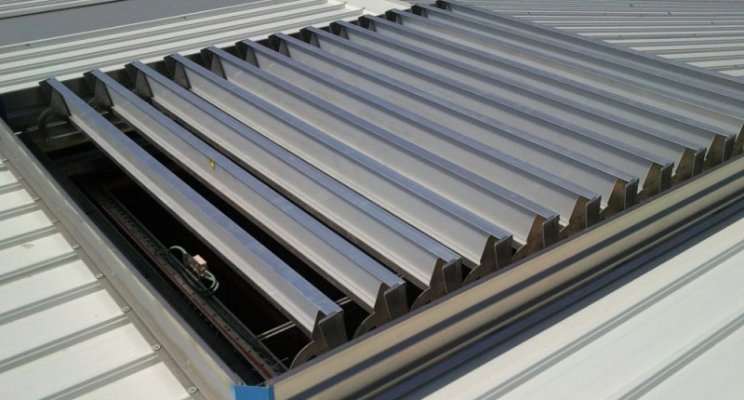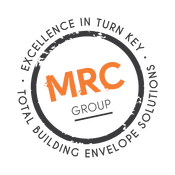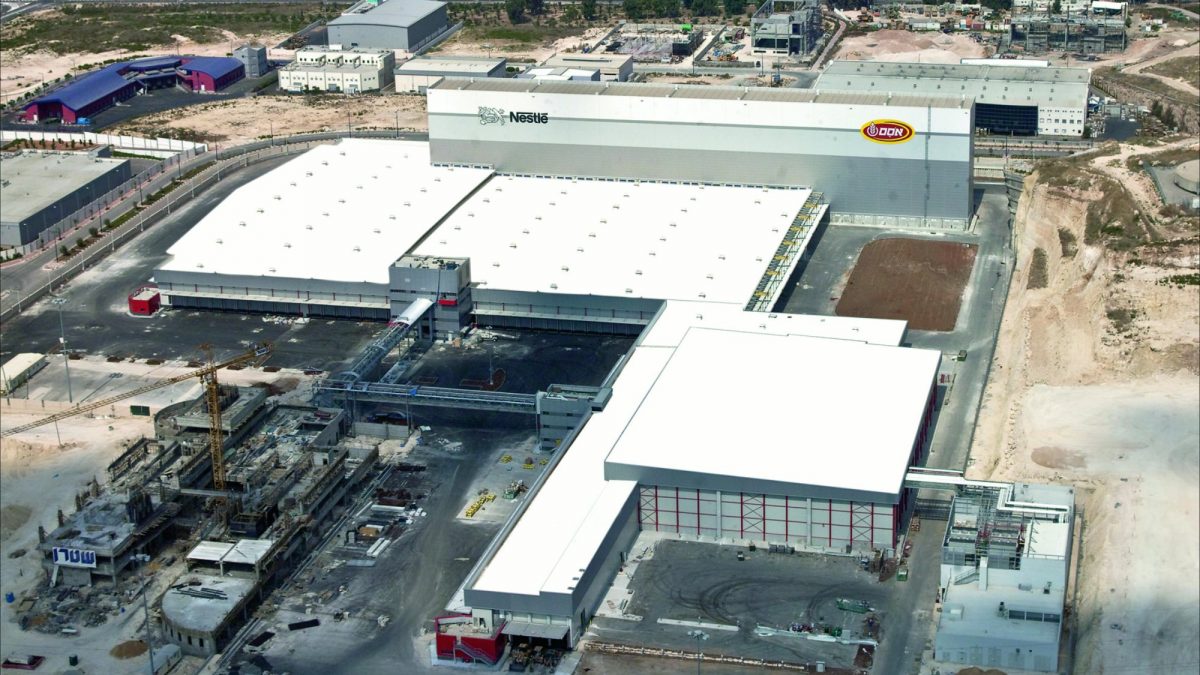
How compliant are your smoke ventilators in your building? ……. Will they operate the way they were intended to, when you need them most?
31 July, 2017
Are African construction methods of Roof Construction failing the building owners? What is the real thermal performance of your insulated roof?
4 August, 2017MRC Group is an independent installer / applicator of waterproofing systems and as such we have access to a vast range of waterproofing systems from all parts of the globe. The aim of this article is to provide technical and commercial information to enable specifiers to make more informed decisions regarding the all important waterproofing system that they are looking to specify to keep water out of the building.
With more and more waterproofing systems being added to the marketplace every year, selecting the right waterproofing system can be a confusing and tedious task. With this vast array of waterproofing solutions, the uninformed end user could quite easily make the mistake of choosing cost over a quality product and qualified installer. While cost is certainly a factor to consider, an incorrectly installed waterproofing system is likely to fail – resulting in a leaky mess and unnecessary, costly repairs.
Long-term waterproofing system failure is a common occurrence, often due to insufficient product knowledge or incorrect application. Most products in the marketplace leave the manufacturing plant fit for purpose, but how it is applied is the key factor for long-term success. When choosing a contractor or installer qualified to install the waterproofing product, it is essential to check whether they are associated with the industry trade associations. Also important is whether the length of term of the product warranty they offer is matched by their workmanship, including areas such as the perimeter details. Incorrect or shoddy application will leave you holding the bill – maybe not this year or the next, but eventually incorrect applications always catch up with the building owner.
STATE OF THE ROOF
Consideration must be given to both the type of roof the waterproofing system is being applied to as well as its current condition before application. If it’s rusted or already has a failed waterproofing system in place, precautionary measures need to be taken prior to application to clean the roof to ensure the success of the new waterproofing system. Trying to apply a new waterproofing system to an existing failed waterproofing system could end in disaster.
THE PROBLEM AREAS
Metal Roof:
Old, rusty or leaky metal roofs most often have leaks occurring at the flashing details (vents, fasteners, valley gutters, ridge caps, skylights, etc.) and on the roof sheeting itself the end and side lap details, due to previous incorrect installation or lack of maintenance. Daily thermal movement and harsh weather conditions can, over time, cause screws and fasteners to loosen, thus creating opportunity for water ingress.
Asbestos Roof:
While asbestos is water resistant, over time the material becomes porous and weak, leaving it susceptible to water ingress through damaged sheets and the opening-up of the side and end laps. As the roof sheeting becomes older, access to the roof becomes more difficult and more damage to the sheeting can occur. Cracks and breaking of the asbestos roof sheets can leave the roof lethal to walk on to the untrained contractor.
Flat Roof:
Water ponding is a common problem experienced with most waterproofing systems. Internal drainage failure or long-term thermal expansion damage will allow excess water to form ponds, which can increase in size over time. Most waterproofing systems are not guaranteed under long-term water ponding. As a result, the weight of the water puts a tremendous strain on the structure that can cause structural damage and possible structural failure.
WATERPROOFING SOLUTIONS
It is good practice with all the waterproofing solutions below to visually inspect the roof every year to ensure there is no water ingress or minor failures.
Please note the solutions below are generic solutions and each specific product and manufacturer will have their own terms and caveats. The below is simply to give an indication of the industry standard.
All costs given are indicative and are based on the general roof area with no allowance for perimeter details, penetrations, access equipment or contractor site set up.
If refurbishment of an existing waterproofing systems is being considered then cleaning, priming or stripping costs may need to be added to the below quoted figures.
‘Torch On’ Bitumen Membranes:
Ideal for sustaining harsh weather conditions and offering complete water damage protection that is impact and tear resistant. Torch-on coatings provide excellent elasticity, ensuring all usual movement is well accommodated, restricting any unnecessary structural damage and costly long-term repairs. Two layered ‘torch-on’ systems are to be used in Southern Africa due to the thermal movement from high temperatures from the sun and the constant UV.
Supply and Installation costs: R280 – R350 / m2 EXC VAT.
Guarantee: Normally 8 – 10 years
Caveats to the guarantee: Two coats of aluminium silver reflective coat to be applied to the membrane with the installation of the membrane and EVERY 2 to 3 years an inspection and an additional coat of aluminium silver reflective coating to be applied. Therefore on going costs throughout the life of the material guarantee of up to R24 / per m2 per additional coat.
Liquid Applied Waterproofing Coating:
Providing a seamless monolithic waterproof coating to almost any roof system and associated gutters, these systems can be applied with brushes, rollers or spray systems, depending on the application type and size. This method of coating means that vast areas can be applied extremely quickly and with exceptional drying times to provide a weather-tight solution.
Supply and Installation costs: R120 – R400 / m2 EXC VAT.
Guarantee: Normally 5 – 10 years
Caveats to the guarantee: EVERY 5 years an inspection and an additional top coat to be applied. Therefore on going costs throughout the life of the material guarantee of up to R31 / per m2 per additional coat.
‘Cool Roof’ Liquid Applied Waterproofing:
In most cases, these have all the benefits of a liquid applied waterproofing system – but with an added advantage of ‘cool roof’ technology, which either reflects or dissipates the sun’s rays. This reduces the temperature of the existing roof system, resulting in significant reduction in thermal movement and internal air temperature. For example, a metal roof sheet can achieve temperatures of up to 100°C in the summer, but with the application of a ‘cool roof’ waterproofing system this temperature can be reduced to below 60°C.
Supply and Installation costs: R150 – R500 / m2 EXC VAT.
Guarantee: Normally 5 – 10 years
Caveats to the guarantee: EVERY 5 years an inspection and an additional top coat to be applied. Therefore on going costs throughout the life of the material guarantee of up to R52 / per m2 per additional coat.
Single Ply Roof Membranes:
Synthetic roofing membranes have been used for decades as a quick-to-install waterproofing solutions that can negate the issue of application onto existing failed waterproofing systems by using the option of mechanically fixing the single ply roofing membrane back to the structure. Additional insulation can be installed between the existing roof and the new membrane roof system to upgrade and enhance the thermal performance of the roof.
Supply and Installation costs: R240 – R300 / m2 EXC VAT.
Guarantee: Normally 15 – 20 years
Caveats to the guarantee: EVERY 3 years an inspection. No requirement for any additional coatings, so therefore no on going costs throughout the life of the material guarantee unless there is significant damage by external sources.
WATERPROOFING SYSTEM SPECIFYING REQUIREMENTS: KNOW YOUR FACTS
To assist with product selection, here are some common terms to look out for:
Light Reflective Value (LRV):
Indicates the level of light reflected and absorbed by an object or surface when exposed to light. Any surface with an LRV of less than 50% will absorb more light, resulting in darker appearing colours and a hot surface area. Surfaces with an LVR greater than 50% will reflect more visible light, creating a much cooler, temperature-stable environment.
Emissivity Value:
Measures how effectively a body’s surface radiates energy that has been absorbed by the body. A perfect emitter would have an emissivity value of 1 and would freely radiate absorbed energy back into the environment. Surfaces with low emissivity hold on to absorbed energy and do not radiate it freely. Emissivity plays an important role in how a material performs in a given environment.
Solar Reflective Value (SRI):
Using a scale of 0 – 100, the SRI of a surface is calculated for a given surface. SRI combines the values of solar reflectance and emissivity to give an indication of how hot a surface will become when exposed to sunlight. It is normally preferable to have a high SRI (cooler surface) as this reduces thermal movement (expansion and contraction) of a roof, degradation of polymers by heat (materials last longer), and heat transfer into the building. For particularly hot or cool surfaces, the SRI can sometimes reflect below 0 or even above 100.
Some products offer great LRV, but the emissivity of the material may be low – often reaching extremely high temperatures of around 80°C. These temperatures increase thermal movement, resulting in preventable damage. For best results, source products that offer a combination of impressive LRV, Emissivity and Solar Reflectance, for a well-rounded waterproofing solution that will extend the life of the roof, reduce energy needs, and ensure no further leaks for many years to come.
Material Elasticity:
Daily thermal movement is unavoidable, even if significantly reduced with the use of a cool roof coating. It’s imperative to select a product with flexibility and elastic properties, to ensure it’s able to easily withstand daily expansion and contraction without being susceptible to tears or damage. A flexible waterproofing system will also bridge cracks that develop over time and prevent future leaks from occurring.
CLEANING OR PRIMING
As waterproofing systems are used quite substantially in the refurbishment marketplace, it is essential to understand what the new waterproofing systems is being applied to. New galvanized roof sheeting generally comes with rolling oil from the manufacturing process. Moreover, the moisture content of concrete structures and screeds, as well as existing failed waterproofing systems will all have a long-term impact on the ability of the new waterproofing system to remain adhered. In some cases, thorough correct cleaning of the existing roof is the preferred route. In other cases, application of a keying primer can be the best way. Each needs to be considered on a project-by-project basis.
APPLICATION SPECIFYING REQUIREMENTS
The current industry standard is to provide a long-term product guarantee with a short-term application or workmanship warranty and no maintenance element, leaving the building owner holding the bill should failure occur. Any specifier looking for a long-term, successful waterproofing application should select a knowledgeable and experienced installer willing to offer a warranty to cover material, workmanship and maintenance of equal length of terms. Regular maintenance of the waterproofing roof system and its associated gutters is key to ensuring its success. If not maintained correctly, the system is sure to fail at some point.
KEYS TO SUCCESS
- Clear understanding of what the waterproofing system is being applied to
- Correct specification of the waterproofing system
- Experienced and controlled application
- Continued maintenance for the life of the warranty
SUMMARY
Waterproofing should be considered over a 20 year life span and whilst some products need constant maintenance and re-coating to ensure the guarantee of the material, some products don’t need to be re-coated at all.
Many roofs are never maintained and therefore the product guarantees provided are invalidated, so at point of claim the client is left with the bill. Getting safe access to the roof every 2 to 3 years can be a problem for many buildings, so the material with the longest guarantee with minimal maintenance can very often be the appropriate solution.
For more information, contact Richard Polling at MRC Group on cell: +27 (0)79 340 2318, e-mail: [email protected] or visit www.mrc-group.co.za


